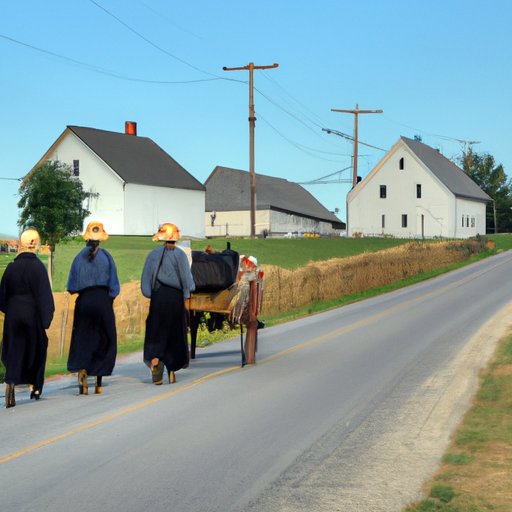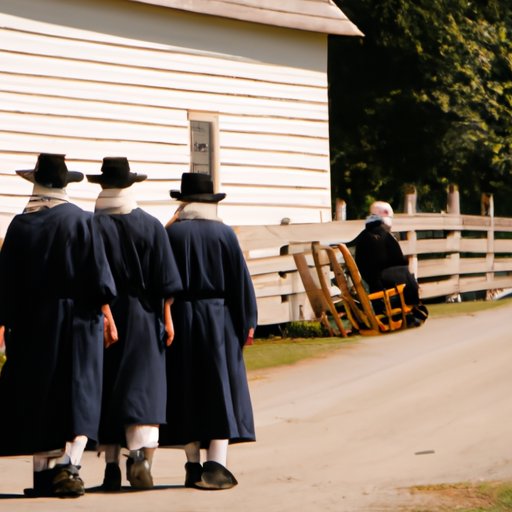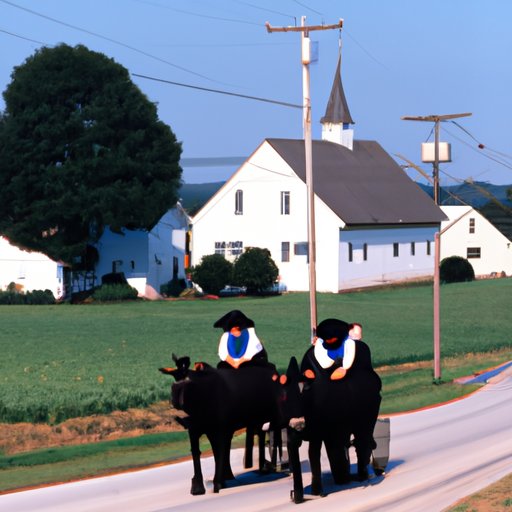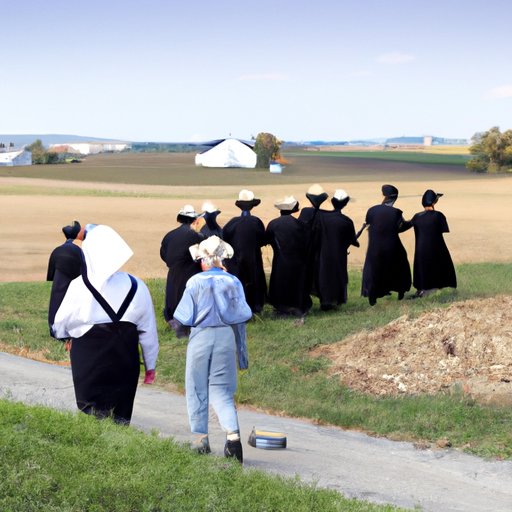Introduction
The Amish are a distinct group of people with a long and fascinating history that has captivated the modern world. They have a unique set of beliefs and practices that set them apart from other religious groups, but what is the origin story behind this distinctive culture? This article will explore the origin and history of Amish culture, tracing the roots of this unique and enduring people from early Anabaptists in Europe to their current presence in North America.

A History of the Amish: Tracing the Origins of an Enduring Culture
The Amish are direct descendants of a branch of Christianity known as Anabaptism, which began in the 16th century in Switzerland. The Anabaptists were a radical religious movement that rejected infant baptism and sought to restore the early Christian Church. They emphasized adult baptism, pacifism, and voluntary church membership. These beliefs were seen as heretical by the Catholic and Protestant Churches, and the Anabaptists were persecuted for their faith.
The Anabaptist movement spread across Europe in the 17th century, with communities popping up in Germany, France, and the Netherlands. One of these communities was founded by Jakob Ammann, an Anabaptist leader from Switzerland who had a vision for a stricter form of Anabaptism. He believed in a more literal interpretation of the Bible, a rejection of infant baptism, and the practice of shunning members who did not adhere to the strict rules of the community. This group eventually became known as the Amish.
The Amish arrived in North America in the 18th century, settling in Pennsylvania. Here, they established a number of distinct communities, each with its own set of beliefs and practices. These communities were largely isolated from the outside world, and the Amish maintained their distinct culture and traditions over the centuries.

The Early Amish: The Religious and Cultural Roots of a Unique People
The early Amish communities were characterized by their simple lifestyle, traditional dress, and adherence to strict religious beliefs. They believed in living a life of humility, self-reliance, and simplicity, and they rejected many aspects of modern life such as technology, material possessions, and higher education. The Amish also had distinctive practices and beliefs, such as the practice of shunning and the belief in a literal interpretation of the Bible. These beliefs and practices set the Amish apart from other Anabaptists and helped to shape the distinct culture of the Amish.
The Amish also had some differences from other Anabaptists, most notably in their acceptance of traditional gender roles. While other Anabaptists allowed for more egalitarian roles between men and women, the Amish maintained a patriarchal structure in which men held the majority of authority and power in the community. This was one of the key differences between the Amish and other Anabaptists and it helped to shape the distinct culture of the Amish.
How the Amish Came to Be: Understanding the History of the Anabaptists
Anabaptism is a branch of Christianity that emerged during the Protestant Reformation in the 16th century. It was founded on the idea that Christians should only be baptized as adults, after they had made a conscious decision to follow Christ. Anabaptists also rejected many aspects of the Catholic and Protestant churches, such as infant baptism, and they advocated for a more literal interpretation of the Bible.
“Anabaptists shared common beliefs, such as the need for believers’ Baptism, rejection of infant baptism, nonviolence, and the separation of church and state,” says historian John D. Roth. “But within the broader Anabaptist tradition, there were a variety of theological perspectives and practices.”
These different perspectives and practices were part of what led to the emergence of the Amish in the 17th century. The Amish, led by Jakob Ammann, sought to create a stricter form of Anabaptism that adhered more closely to the teachings of the Bible. This included a rejection of infant baptism and a greater emphasis on shunning members who did not adhere to the strict rules of the community.

From Europe to America: A Look at the Spread of Amish Culture
The Amish migrated to North America in the 18th century, settling in Pennsylvania. Here, they established a number of distinct communities, each with its own set of beliefs and practices. Over time, the Amish expanded their settlements across the continent, establishing new communities in Canada, Ohio, Indiana, and other states. As they spread, their culture and traditions were passed down from generation to generation, ensuring the continuity of the Amish way of life.
The Amish have also had an influence on American culture, particularly in the areas of food and craftsmanship. Their distinctive style of furniture, quilts, and other crafts have become popular in recent years, and their traditional recipes have been embraced by people of all backgrounds. This influence has helped to ensure the survival of Amish culture into the modern era.
The Journey of the Amish: Where Did This Distinctive Group Begin?
The Amish can trace their origins back to the Anabaptist movement that emerged in Europe in the 16th century. This movement was based on the idea that Christians should only be baptized as adults and should reject many aspects of the Catholic and Protestant churches. One of the groups that emerged from this movement was the Amish, led by Jakob Ammann. The Amish sought to create a stricter form of Anabaptism that adhered more closely to the teachings of the Bible.
The Amish eventually migrated to North America in the 18th century, where they established a number of distinct communities. Over time, these communities spread across the continent, and their culture and traditions were passed down from generation to generation. Today, the Amish are still a distinct group of people with a unique set of beliefs and practices that set them apart from other religious groups.
Exploring the Unique Beliefs and Practices of the Amish: Their Origin Story
The Amish have a unique set of beliefs and practices that stem from their Anabaptist roots. These include a strict adherence to the Bible, a rejection of infant baptism, and the practice of shunning members who do not adhere to the strict rules of the community. These beliefs and practices have been passed down from generation to generation and have helped to shape the distinct culture of the Amish.
The Amish also have a unique origin story that helps to explain their distinctive culture. This story begins in Europe in the 16th century, with the emergence of the Anabaptist movement. It then follows the journey of the Amish to North America in the 18th century, and their subsequent expansion across the continent. This story is an important part of understanding the unique beliefs and practices of the Amish, and it helps to explain why their culture has endured for centuries.
Conclusion
The Amish are a distinct group of people with a long and fascinating history. They have a unique set of beliefs and practices that have shaped their culture and helped it to endure for centuries. This article has explored the origin and history of Amish culture, tracing the roots of this unique and enduring people from early Anabaptists in Europe to their current presence in North America. From this exploration, we can gain a better understanding of the unique beliefs and practices of the Amish and the significance of Amish culture today.
(Note: Is this article not meeting your expectations? Do you have knowledge or insights to share? Unlock new opportunities and expand your reach by joining our authors team. Click Registration to join us and share your expertise with our readers.)
